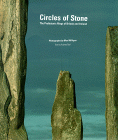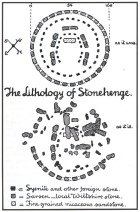<< Text Pages >> Mold and Rosenburg Ancient Settlements - Ancient Village or Settlement in Austria
Submitted by Alun on Monday, 16 October 2006 Page Views: 5691
DigsSite Name: Mold and Rosenburg Ancient SettlementsCountry: Austria Type: Ancient Village or Settlement
Nearest Town: Rosenburg Nearest Village: Mold
Latitude: 48.633300N Longitude: 15.683300E
Condition:
| 5 | Perfect |
| 4 | Almost Perfect |
| 3 | Reasonable but with some damage |
| 2 | Ruined but still recognisable as an ancient site |
| 1 | Pretty much destroyed, possibly visible as crop marks |
| 0 | No data. |
| -1 | Completely destroyed |
| 5 | Superb |
| 4 | Good |
| 3 | Ordinary |
| 2 | Not Good |
| 1 | Awful |
| 0 | No data. |
| 5 | Can be driven to, probably with disabled access |
| 4 | Short walk on a footpath |
| 3 | Requiring a bit more of a walk |
| 2 | A long walk |
| 1 | In the middle of nowhere, a nightmare to find |
| 0 | No data. |
| 5 | co-ordinates taken by GPS or official recorded co-ordinates |
| 4 | co-ordinates scaled from a detailed map |
| 3 | co-ordinates scaled from a bad map |
| 2 | co-ordinates of the nearest village |
| 1 | co-ordinates of the nearest town |
| 0 | no data |
Be the first person to rate this site - see the 'Contribute!' box in the right hand menu.
Internal Links:
External Links:
Back to the Stone Age - how did the first farmers live? The living conditions of the first farmers from the early Stone Age are being comprehensively reconstructed for the first time ever in Austria. This has been made possible by an interdisciplinary research project currently underway aimed at the thorough investigation of two early settlements at Mold and Rosenburg in Austria.
The project, supported by the Austrian Science Fund FWF, is expected to produce results that will be of great significance throughout Europe.
The people that established Central Europe's first farms in the late 6th millennium BC were not behind the times. Indeed, a combination of arable agriculture and animal husbandry was already being operated in this period. However, until now, research on more detailed aspects of day-to-day agricultural practices in Austria has largely been sparse in comparison to work in other European countries.
A current project is set to change all that. Two agricultural settlements are being closely scrutinized in order to create a detailed picture of life as an "early farmer". Over the next two years, a team headed by project manager Doz. Dr. Eva Lenneis from the Institute for Pre- and Protohistory at the University of Vienna will be examining finds such as animal bones, plant remains, pottery and stone tools.
An Archaeological Jigsaw Puzzle
Examining these finds should help to clear up a number of issues, as Dr. Lenneis explains - "our aim is not just to find out the significance of cultivating of crops as opposed to collecting wild plants, or which domesticated animals were being kept. We are also interested in the overarching economic structures and the relations and hierarchies both between and within the settlements." When pieced together, the individual results that are obtained will help to reconstruct an overall picture of early farming life, much like an archaeological jigsaw puzzle.
The project is based on two sites discovered in Lower Austria that are located only a few kilometres apart - Mold and Rosenburg. The four-hectare settlement at Mold has produced finds of extraordinary quality. Finds awaiting examination include some 60 kilos of well-preserved animal bones and an unusually sized dwelling, which is unique in Austria and which has few equals throughout Europe.
Rosenburg presents something of a mystery. Preliminary investigations of this much smaller site reveal it to be quite an unusual settlement. The project now aims to shed light on the purpose of a large number of unusual "slit- pits" and the odd location of the site, in the middle of a wooded area.
Modern-day Investigative Diversity
Comparing the settlement at Mold with the unusual site at Rosenburg has the potential to uncover a range of exciting new discoveries. However, a purely archaeological/historical approach is out of the question. A precise timeline for both sites can only be established by examining a broad range of samples with C14 radiocarbon dating at the Vienna-based VERA laboratory. Moreover, botanists and zoologists are also working alongside archaeologists to uncover traces of the first farmers.
"At the moment, we are collecting and examining animal bones and plant remains. Pottery finds are being entered into an image database and plans of the buildings are being digitised to enable computer-generated analysis in the next stage," explains Dr. Lenneis.
The completion of individual investigations could soon be providing the first results. The entire investigation project will be completed in summer 2008 and will be the first to reconstruct every aspect of life as a Stone-Age farmer in Austria. Comparative investigation of this kind is rare, even in Europe. The FWF project will then have filled important gaps in research and given modern farmers an insight into how their forebears lived.
Source: Press Release Institute for Pre- and Protohistory, University of Vienna. There is an image of the farmstead available to download.
IMPORTANT NOTE: Location given is for the village of Mold, Austria. Please post a more accurate long/lat for this site if you know it
You may be viewing yesterday's version of this page. To see the most up to date information please register for a free account.
Do not use the above information on other web sites or publications without permission of the contributor.
Nearby Images from Flickr






The above images may not be of the site on this page, but were taken nearby. They are loaded from Flickr so please click on them for image credits.
Click here to see more info for this site
Nearby sites
Click here to view sites on an interactive map of the areaKey: Red: member's photo, Blue: 3rd party photo, Yellow: other image, Green: no photo - please go there and take one, Grey: site destroyed
Download sites to:
KML (Google Earth)
GPX (GPS waypoints)
CSV (Garmin/Navman)
CSV (Excel)
To unlock full downloads you need to sign up as a Contributory Member. Otherwise downloads are limited to 50 sites.
Turn off the page maps and other distractions
Nearby sites listing. In the following links * = Image available
16.2km NE 53° Kalenderstein von Leodagger* Rock Art
18.5km N 355° Summstein Geras* Modern Stone Circle etc
27.5km NE 50° Heiliger Stein (Mitterretzbach)* Rock Art
31.2km S 178° Urzeitmuseum* Museum
31.4km S 176° Gräberfeld Traisental* Barrow Cemetery
32.8km NE 40° Masovice Prehistoric Settlements Ancient Village or Settlement
35.4km NW 306° Grosse Basilica* Modern Stone Circle etc
35.7km NE 44° Samaritánka Well* Holy Well or Sacred Spring
35.9km NE 45° Great Moravia hillfort - Hradiště* Hillfort
36.0km NE 45° U oveček* Rock Outcrop
36.1km NE 46° Stone stele Hradiste* Standing Stone (Menhir)
38.2km SW 215° Gars-Thunau Hillfort* Hillfort
40.1km SSW 211° Venus of Willendorf* Ancient Village or Settlement
42.3km ESE 114° Geitzendorf* Barrow Cemetery
42.9km ESE 112° Leeberg* Artificial Mound
44.1km WNW 298° Wolfsegg* Sculptured Stone
45.2km SE 128° Hügelgrab Löwenberg* Round Barrow(s)
46.2km W 262° Gross Gerungs Steinpyramide* Pyramid / Mastaba
46.7km WNW 302° Hängender Stein* Natural Stone / Erratic / Other Natural Feature
47.2km W 274° Summstein Thaya* Modern Stone Circle etc
47.8km NW 312° Platz des Scorpions* Natural Stone / Erratic / Other Natural Feature
48.9km ESE 113° Niederhollabrunn Leeberg Round Barrow(s)
49.2km WNW 296° Wackelstein in Amaliendorf* Natural Stone / Erratic / Other Natural Feature
49.2km ESE 112° Niederfellabrunn Leeberg Round Barrow(s)
49.6km W 266° Weltkugel* Natural Stone / Erratic / Other Natural Feature
View more nearby sites and additional images






 We would like to know more about this location. Please feel free to add a brief description and any relevant information in your own language.
We would like to know more about this location. Please feel free to add a brief description and any relevant information in your own language. Wir möchten mehr über diese Stätte erfahren. Bitte zögern Sie nicht, eine kurze Beschreibung und relevante Informationen in Deutsch hinzuzufügen.
Wir möchten mehr über diese Stätte erfahren. Bitte zögern Sie nicht, eine kurze Beschreibung und relevante Informationen in Deutsch hinzuzufügen. Nous aimerions en savoir encore un peu sur les lieux. S'il vous plaît n'hesitez pas à ajouter une courte description et tous les renseignements pertinents dans votre propre langue.
Nous aimerions en savoir encore un peu sur les lieux. S'il vous plaît n'hesitez pas à ajouter une courte description et tous les renseignements pertinents dans votre propre langue. Quisieramos informarnos un poco más de las lugares. No dude en añadir una breve descripción y otros datos relevantes en su propio idioma.
Quisieramos informarnos un poco más de las lugares. No dude en añadir una breve descripción y otros datos relevantes en su propio idioma.